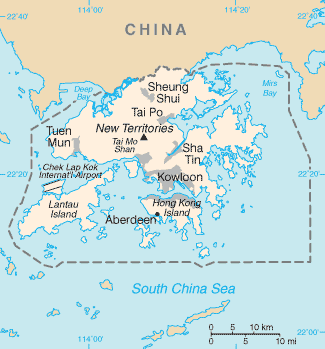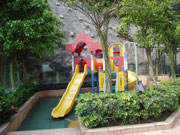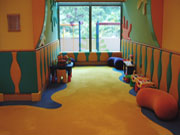Vol. VII, No. 2, February/April 2007
- Editor's corner
- Restaurant and entertainment expenditures
- New "networked" consumer more fluid and connected
- Knuckleheads eatertainment center opens in Wisconsin Dells
- Never old
- Foundations Entertainment University - April 24-26
- Wannado reduces prices
- Cultural differences
- American food goes upscale
- Visible glove use gives good impression
- Hero's The Party Experience
- Restaurant failures: The truth and the reasons
- Starbucks' 5 core principles for success
- McLattes on the way
- The silliness of most surveys
- New projects
Editor's corner
This month we have 15 stories for you. It's amazing how productive a 14-hour flight from Los Angeles to Hong Kong can be. Up at 30,000+ feet, there's not much to distract you, other than the airlines' insistence on constantly feeding you. And if you go to the cinema a lot like I do, you've probably already seen most of the movies offered on the flight. So there's only sleep, food and the computer.
This was my second trip to Hong Kong. In 1999 I was there more as a tourist on a three-week around the world journey. We were working on our project in Dubai, LouLou Al Dugong's. First we stopped in Morocco to interview staff, then went on to Dubai, then to India and Thailand to interview staff. We figured it was easier to head home from Thailand by just continuing east, so we decided to stop in Hong Kong for a few days to check it out before going to Hawaii for Christmas.
The 1999 visit was just two years after the British, who had ruled Hong Kong as a Crown colony of the United Kingdom since 1842, transferred sovereignty to China. Most of the expatriates had gone, so we didn't see Westerners on that trip. This time it was a lot different. There are more than 100,000 expats, predominately working in the banking and financial industry.
Hong Kong is now a Special Administrative Region of the People's Republic of China and is known as Hong Kong SAR. It has its own independent government run by a chief executive, befitting for a financial capital city. Hong Kong is considered a dependency rather than a country. Hong Kong SAR encompasses 262 islands in the South China Sea. Lantau is the largest. What most foreigners refer to as Hong Kong is actually the second largest island and the most populated. Hong Kong SAR is one of the most densely populated countries/dependencies in the world with 16,000 people per square mile (6,200 per square kilometer). That's one person for every 1,700 square feet (160 sm). The overall population is 7 million with 1.4 million living on Hong Kong Island, mostly on the north side where the dense urban financial office core is located.

On this trip I was working for two expat women, so I got to see Hong Kong island from the perspective of a resident, though not a native of China.
Several things struck me. One was the smog - it was terrible. When I flew into the airport, I couldn't even see the hills in the near distance. The high humidity aggravates the problem. The most recent issue of Time magazine reported, "Air pollution remains atrocious." Many in Hong Kong believe the pollution comes across the border from the Pearl River Delta in China, but new research shows that about half the time, Hong Kong's air pollution comes from local sources.
Hong Kong island is extremely densely populated, developed mostly at its edges because the center is mostly mountainous. It is a very vertical city with mostly high-rise offices and apartment/condo buildings. Most of the buildings are quite slender, with a small footprint and often 40 stories or more. They look almost as if they will break if the wind blows too hard. Yet the city is also amazingly green. Parks and vegetation are woven into most of the city, so you rarely lose sight of greenery. The city is also incredibly clean. Overall, it is a very cosmopolitan city.
















Even at the island's edges, development is not on flat land. It winds up the sides of hills and mountains. Sometimes you enter buildings from the street on the fourth or fifth floors, as the buildings go both up and down the hills. It is even hillier than San Francisco, and the winding roads have hairpin turns. Fortunately, taxis are very cheap and plentiful. You can travel a good ways for less than $2. To avoid driving and dealing with parking, many residents just cab-it, much like on Manhattan island in New York.


Ice skating and go-karts at the Aberdeen Marina Club in Hong Kong.
Family entertainment and children's play have evolved differently in Hong Kong than in other cities. There are no public family entertainment centers. Such entertainment is found only in private clubs. The three largest, only family-oriented and most popular are the Aberdeen Marina Club (550,000 square feet in size) and the American Club on the south side of the island and the LRC (formerly the Ladies Recreation Club) on the north side. These clubs offer tennis, swimming, restaurants, spas, children's play areas, bowling and function facilities, including children's birthday party rooms. The Aberdeen Marina Club also has ice skating and indoor go-karts. There are also a large number of sports-oriented clubs, but these don't have family facilities.
Indoor and outdoor children's play areas are also found in many of the larger apartment complexes.



Apartment play
areas
One reason there are no public family entertainment centers, free standing or in malls, could be due to the extremely high cost of land and high rent. The clubs have been able to develop and offer entertainment through membership initiation fees that can be as high as $150,000, plus on-going monthly fees. Many of the banks and financial institutions pay membership fees for their expat executives as part of the inducement package to get them and their families to move to Hong Kong.
So we hope our little travelogue was of interest. If I return, I'll try to get some photos that show the city's character from street level. Generally, the only photos you see are picturesque harbor views (not that the harbor isn't a vibrant part of the city). It was overcast on this trip, smoggy or rainy the entire time. Apparently that's typical weather for the spring, but it wasn't conducive to photography.
We've also added a new feature to make it easier for you to comment on any of our articles. At the end of article, we have added, "Click here to comment on this article," which will bring up an e-mail addressed to us.
Don't hesitate to contact me with any comments about our labor of love, Leisure eNewsletter.
Randy White, Editor
e-mail
Vol. VII, No. 2, February/April 2007
- Editor's corner
- Restaurant and entertainment expenditures
- New "networked" consumer more fluid and connected
- Knuckleheads eatertainment center opens in Wisconsin Dells
- Never old
- Foundations Entertainment University - April 24-26
- Wannado reduces prices
- Cultural differences
- American food goes upscale
- Visible glove use gives good impression
- Hero's The Party Experience
- Restaurant failures: The truth and the reasons
- Starbucks' 5 core principles for success
- McLattes on the way
- The silliness of most surveys
- New projects


